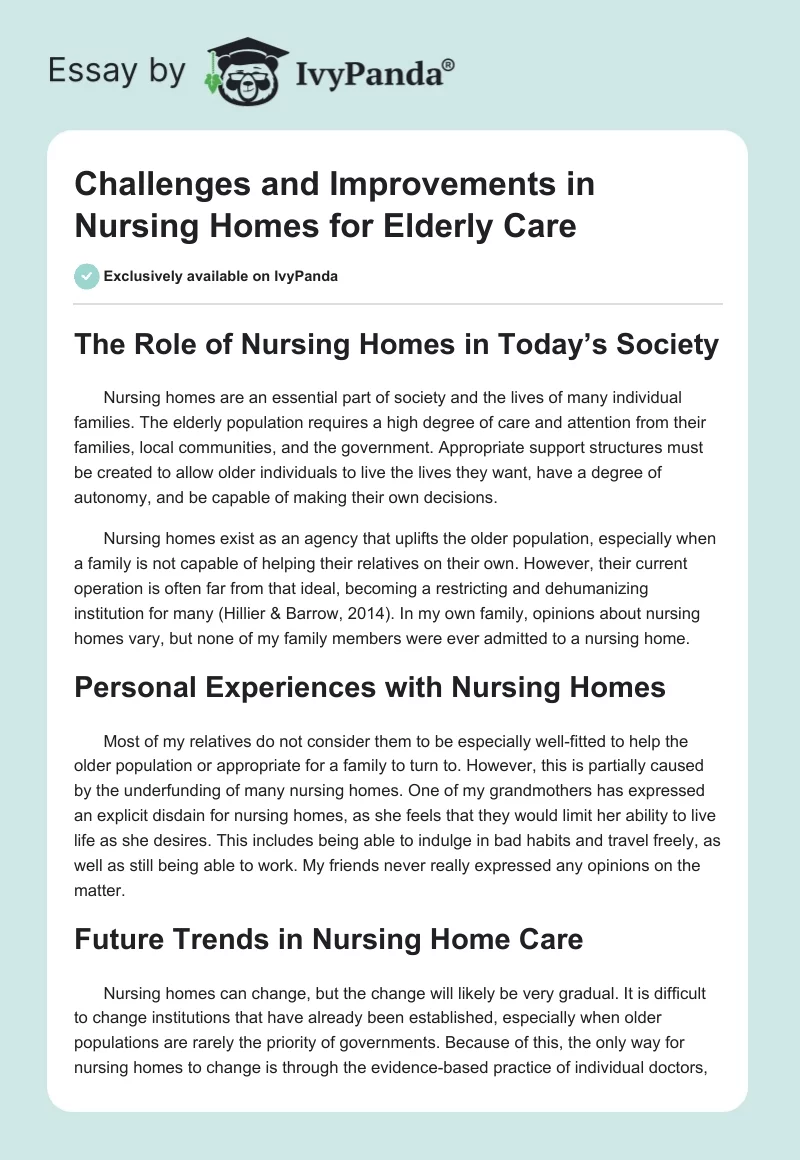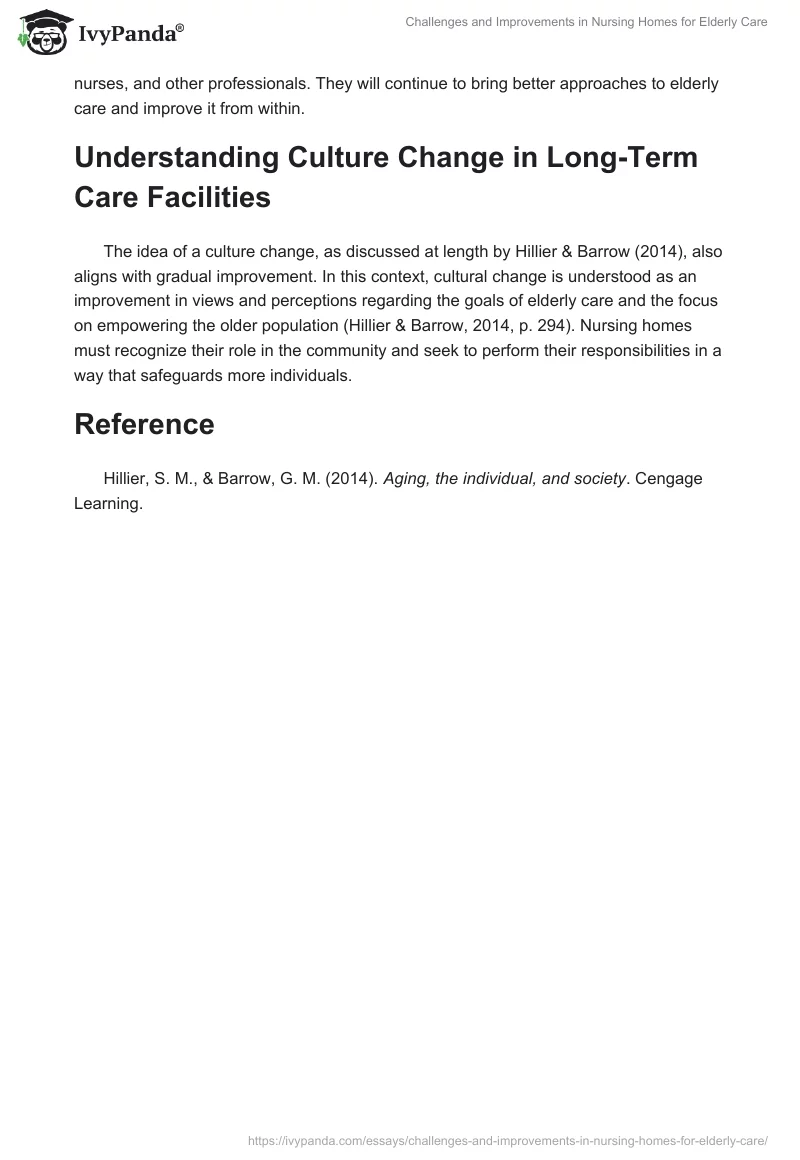The Role of Nursing Homes in Today’s Society
Nursing homes are an essential part of society and the lives of many individual families. The elderly population requires a high degree of care and attention from their families, local communities, and the government. Appropriate support structures must be created to allow older individuals to live the lives they want, have a degree of autonomy, and be capable of making their own decisions.
Nursing homes exist as an agency that uplifts the older population, especially when a family is not capable of helping their relatives on their own. However, their current operation is often far from that ideal, becoming a restricting and dehumanizing institution for many (Hillier & Barrow, 2014). In my own family, opinions about nursing homes vary, but none of my family members were ever admitted to a nursing home.
Personal Experiences with Nursing Homes
Most of my relatives do not consider them to be especially well-fitted to help the older population or appropriate for a family to turn to. However, this is partially caused by the underfunding of many nursing homes. One of my grandmothers has expressed an explicit disdain for nursing homes, as she feels that they would limit her ability to live life as she desires. This includes being able to indulge in bad habits and travel freely, as well as still being able to work. My friends never really expressed any opinions on the matter.
Future Trends in Nursing Home Care
Nursing homes can change, but the change will likely be very gradual. It is difficult to change institutions that have already been established, especially when older populations are rarely the priority of governments. Because of this, the only way for nursing homes to change is through the evidence-based practice of individual doctors, nurses, and other professionals. They will continue to bring better approaches to elderly care and improve it from within.
Understanding Culture Change in Long-Term Care Facilities
The idea of a culture change, as discussed at length by Hillier & Barrow (2014), also aligns with gradual improvement. In this context, cultural change is understood as an improvement in views and perceptions regarding the goals of elderly care and the focus on empowering the older population (Hillier & Barrow, 2014, p. 294). Nursing homes must recognize their role in the community and seek to perform their responsibilities in a way that safeguards more individuals.
Reference
Hillier, S. M., & Barrow, G. M. (2014). Aging, the individual, and society. Cengage Learning.


